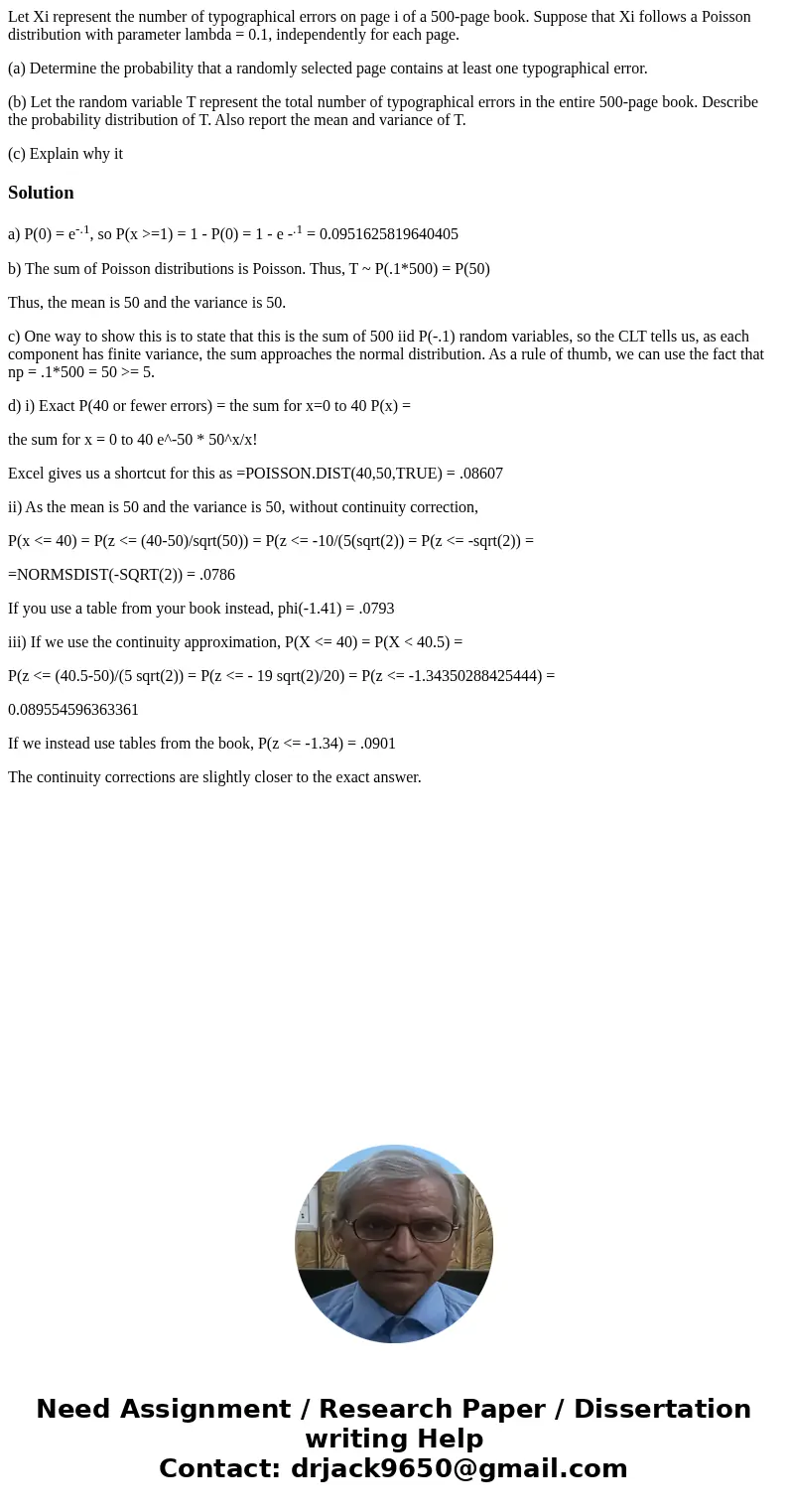Let Xi represent the number of typographical errors on page
Let Xi represent the number of typographical errors on page i of a 500-page book. Suppose that Xi follows a Poisson distribution with parameter lambda = 0.1, independently for each page.
(a) Determine the probability that a randomly selected page contains at least one typographical error.
(b) Let the random variable T represent the total number of typographical errors in the entire 500-page book. Describe the probability distribution of T. Also report the mean and variance of T.
(c) Explain why it
Solution
a) P(0) = e-.1, so P(x >=1) = 1 - P(0) = 1 - e -.1 = 0.0951625819640405
b) The sum of Poisson distributions is Poisson. Thus, T ~ P(.1*500) = P(50)
Thus, the mean is 50 and the variance is 50.
c) One way to show this is to state that this is the sum of 500 iid P(-.1) random variables, so the CLT tells us, as each component has finite variance, the sum approaches the normal distribution. As a rule of thumb, we can use the fact that np = .1*500 = 50 >= 5.
d) i) Exact P(40 or fewer errors) = the sum for x=0 to 40 P(x) =
the sum for x = 0 to 40 e^-50 * 50^x/x!
Excel gives us a shortcut for this as =POISSON.DIST(40,50,TRUE) = .08607
ii) As the mean is 50 and the variance is 50, without continuity correction,
P(x <= 40) = P(z <= (40-50)/sqrt(50)) = P(z <= -10/(5(sqrt(2)) = P(z <= -sqrt(2)) =
=NORMSDIST(-SQRT(2)) = .0786
If you use a table from your book instead, phi(-1.41) = .0793
iii) If we use the continuity approximation, P(X <= 40) = P(X < 40.5) =
P(z <= (40.5-50)/(5 sqrt(2)) = P(z <= - 19 sqrt(2)/20) = P(z <= -1.34350288425444) =
0.089554596363361
If we instead use tables from the book, P(z <= -1.34) = .0901
The continuity corrections are slightly closer to the exact answer.

 Homework Sourse
Homework Sourse